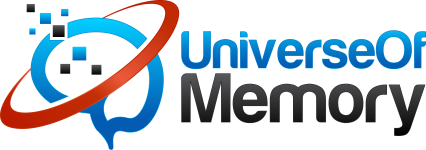Obstacle Thinking – a Simple and Effective Strategy for Solving Complex Problems

Problem-solving is a skill that ranks very high on my list of evergreen skills. We all struggle with problems of different magnitude. Being able to tackle them in an organized way can make our lives way easier.
Unfortunately, there aren't many people that can pride themselves with being problem-solvers extraordinaire. One part of the issue is that they are not aware of the existence of problem-solving methodologies. Another problem, however, is settling for the wrong strategy. It's as ridiculous as trying to traverse the desert with a pair of sandals and a hamster at your disposal. Not only will you be swallowed by the vastness of possible solutions, but you will also look stupid.
In my years of trying to tackle different learning-related issues, I have come to realize that the right way to start solving any problems is identifying the constraints of an area at hand. Once you do, it's much easier to capitalize on those structural disadvantages and arrive at the right answer. This is the approach I have dubbed obstacle learning.
What Is Obstacle Thinking?
Obstacle thinking is the approach to problem-solving that emphasizes the importance of identifying bottlenecks in a given area. Their identification allows narrowing your vision.
This way, you can concentrate on what's truly essential, i.e. avoiding the said obstacles and then adding to the mix the elements that have been proven to work well within a given domain.
You can think about it as entering the invisible maze. If you do it ad-lib, all you will be doing most of the time is headbutting every inch of every wall until your brain convolutions straighten up.
However, the entire process will look completely different if you start with determining the potential constraints. The moment you identify a potential obstacle, a part of the maze materializes, and it allows you to move past it. If you identify enough constraints, you will be able to skillfully move through the maze until you find the exit.
Another way to look at the problem is thinking about doing jigsaw puzzles. Most people don't start assembling them randomly by grabbing a couple of pieces and praying that they fit. Instead, they begin by creating the outline of the picture and then slowly filling out the rest.
Why Not Start With Positive Instances?
Starting the problem-solving process with identifying constraints seems counterintuitive. Thus, the natural question arises - why shouldn't we start with positive instances, i.e. the concepts that are known to be true?
Nassim Taleb has mentioned a great explanation of this phenomenon in his book "Black Swan".
"In a famous argument, the logician W. V. Quine showed that there exist families of logically consistent interpretations and theories that can match a given series of facts. Such insight should warn us that the mere absence of nonsense may not be sufficient to make something true.
The implications of the above are far-reaching. Just because a solution consists of seemingly true facts, it doesn't mean that the entire solution is indeed verifiably true.
It's one of my biggest pet peeves ever. The internet is rife with various idiots who try to conceal their stupid theories under the disguise of science. If you are not careful enough, they will lull your vigilance with scientific banalities and then sell you on their fallacious solutions.
In other words, hundreds of potential solutions might seem true until you start adding constraints to the system.
I will demonstrate examples of this phenomenon at the end of the article.
Limitations - Why They Are Needed To Think Effectively
Even though starting the creative process with identifying constraints might seem counterintuitive, it's very natural. Everything that has ever existed has been born within the constraints of different variables.
The constraints of physics, chemistry, and geometry have governed life from its origins onward—and even into the technicum. “Underlying all the diversity of life is a finite set of natural forms that will recur over and over again anywhere in the cosmos where there is carbon-based life,” claim biochemists Michael Denton and Craig Marshall. Life, rather than being boundless and unlimited in every direction, is bounded and limited in many directions by the nature of matter itself. - Kevin Kelly - What Technology Wants

Photo by Markus Spiske on Unsplash
It's only logical to apply the same logic to problem-solving. Without directing and concentrating your effort within certain boundaries, you are almost guaranteed to fail. A number of choices you will have to face is simply too big.
However, identifying even one limitation shows you that a solution cannot be perfect in a given situation. Think about it.
Even one constraint has the power to disqualify hundreds or even thousands of potential solutions.
What Kind of Constraints Are There?
There are two kinds of limitations that need to be taken into consideration:
(1) Permanent constraints
This is the category we can't do anything about. Those limitations can't be overcome. They are usually specific to a given area of knowledge, but they can also transverse many different disciplines.
Examples:
(1) Using context in language learning
It's been proven beyond a shadow of the doubt that our knowledge is activated contextually. Any language learning method that fails to consider it can be automatically deemed as ineffective.
(2) Removing harmful compounds while composing diets
Depending on a person and their particular health issues, one must deal with lots of permanent limitations that need to be taken into consideration to maximize the benefits of a given diet.
For example:
Composing diets for different ailments is such a great example. Very often, the mere fact of identifying (and removing) those constraints (i.e., harmful compounds) will allow us to establish an excellent base for solving a problem at hand.
(3) Differential diagnosis
The very core of being a good diagnostician means you can apply obstacle thinking. Every symptom that doesn't fit the picture is a constraint that decreases the pool of potential options.
(2) Temporary constraints
Even though those limitations are no different from permanent constraints at the moment of tackling the problem, they can be overcome over time.
Examples:
(1) Budget
Limited budgets are a great example because even though they are an obvious obstacle, they can be increased later on. Alternatively, one might find a way to lower potential costs.
(2) Computational power
Computational power can be a limiting factor in a company for now. However, we know that it's one of the variables that become cheaper with time. It might turn out that it won't be an obstacle anymore in, e.g. two years.
Of course, we have to keep in mind that some factors can be both temporary and permanent, depending on a particular project. Deadlines are certainly one of them. Often they can't be changed because of external obligations. However, in other projects, they are merely a suggestion.
What's worse, some constraints will be self-imposed because of gaps in our knowledge. Once you expand it, it might turn out that they weren't even a problem in the first place.
Requirements for Using Obstacle Thinking Effectively
(1) Ability to amass and manage your knowledge
Most projects are multidisciplinary. They require extensive knowledge from many different areas. If you don't know how to acquire it and manage it, you will never have enough know-how to tackle problems effectively. You will be doomed to forever roam the hamster wheel of knowledge.

Photo by matthew Feeney on Unsplash
(2) Critical thinking and the ability to interpret/analyze data
Expanding your knowledge won't mean much if you're choosing your input indiscriminately or randomly. Not all information is equal. You need to learn how to distinguish primary sources of knowledge from secondary.
What's more, you should also have a good understanding of how to read and interpret scientific studies and comprehend what their limitations are. That requires a very diverse skillset.
(3) Time
Expanding your knowledge and analyzing data, etc. are all time-consuming processes. It's essential to keep in mind that arriving at the right solution might take some time.
(4) Ability to suspend your opinion
We live in quite depressing times where people who don't have an opinion on a topic are considered stupid or ignorant instead of being praised for their prudence. Forming your opinion too fast can be harmful to your problem-solving abilities. It's so easy to fall in love with your idea, even when it's demonstrably false. Before you know, you start disregarding any evidence that contradicts your opinion (see confirmation bias).
A much better solution is to suspend your opinion for the time being until you amass enough knowledge to have a bird's eye view on the problem you're trying to solve.
It takes a special kind of courage not to commit to any opinion, even temporarily. But choosing to be an ignoramus, for the time being, is undoubtedly the right choice for any quality thinker.
An Example of Obstacle Thinking in Action
Let's say that just like me, you are obsessed with finding the perfect learning strategy. Instead of starting with a specific method on our mind, let's focus on the potential constraints to quickly eliminate the ones that don't make much sense. In this case, I will skip the part where I analyze countless scientific papers to establish whether the limitations I quote are true.
(1) Limitation #1 - Passive rehearsal
Many years ago it was actually proven that passive rehearsal has little effect on whether or not information is later recalled from the long-term memory (Craik & Watkins, 1973).
Passive rehearsal is simply a mindless act of rattling off a cluster of pre-prepared information. It's like trying to desperately rehearse someone's phone number and hoping that it will help you remember it ten years from now.
This tells us that if we try to rely on ready-to-use materials, we will fail. In other words, this one piece of information allows to initially discard the following learning strategies:
Limitation #2 - Habituation

Photo by Geraldine Lewa on Unsplash
Habituation is the diminishing of an innate response to a frequently repeated stimulus.
Each time the brain detects a stimulus, it forms a representation of that stimulus and compares that representation with its memory (that is, existing representations) of previously experienced stimuli. If there is no match, then a response is triggered, such as an orienting response, allowing the organism to study this new stimulus further. On the other hand, if there is a match, then the response is suppressed. In other words, responding to familiar stimuli decreases, or habituates.
Multiple exposures to the same stimulus are nothing else than habituation. I won't delve more into this topic as it deserves an article of its own. Instead, let's look at the repercussions of this phenomenon.
The list goes on and on. With every next constraint, we will add into the system, a pool of potential winning strategies will diminish until we arrive at the final answer(s).
Obstacle Thinking - Summary
Obstacle thinking is probably the single most effective problem-solving methodology I know. It allows you to quickly separate the wheat from the chaff. Think about it.
Every potential constraint narrows down your focus by eliminating hundreds of faulty strategies. The more limitations you find, the easier it is to come to the right conclusion.
Unfortunately, simple doesn't mean that it's easy. The requirements for applying this strategy can certainly be considered strict. What's more, often, the right solutions may differ depending on the stage of the process we are trying to improve. For example, we can't expect that beginners and advanced learners will get the same benefits from one single strategy.
Even though obstacle learning thinking a relatively steep learning curve, it's still a must for any problem-solver.
Done reading? Time to learn!
Reading articles online is a great way to expand your knowledge. However, the sad thing is that after barely 1 day, we tend to forget most of the things we have read.
I am on the mission to change it. I have created over 20 flashcards that you can download to truly learn information from this article. It’s enough to download ANKI, and you’re good to go. This way, you will be able to speed up your learning in a more impactful way.
